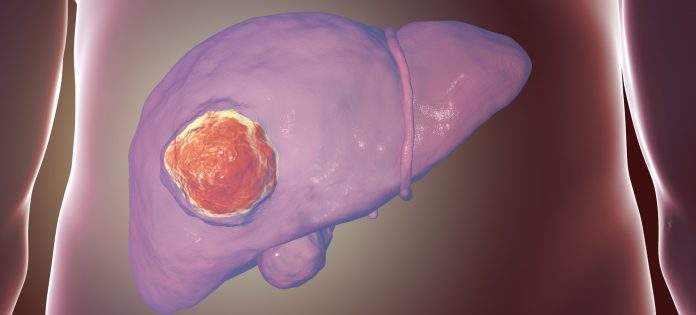
Mount Sinai researchers have shown that shrinking liver tumors to a size that allows the patient to qualify for liver transplant results in excellent 10-year outcomes, validating current US policies for transplant eligibility.
Parissa Tabrizian, Associate Professor of Surgery at the Icahn School of Medicine at Mount Sinai, and colleagues explain in JAMA Surgery that liver transplant eligibility among people with hepatocellular carcinoma (HCC) has been guided by the Milan Criteria for more than 20 years.
The criteria were originally based on tumor number and size, stating that transplantation should be performed in patients with a single tumor of 5 cm or smaller in diameter or two or three tumors that are each no bigger than 3 cm. With time, the guidelines have been refined to incorporate tumor biology, response to bridging therapies, and waiting times for patients within and beyond the Milan criteria.
The American Association for the Study of Liver Diseases currently recommends that patients who do not meet the Milan Criteria should be considered for liver transplant if their viable tumor burden is downstaged to within the criteria following locoregional therapy.
However, the level of evidence is very low, and the strength of the recommendation is conditional, the researchers note.
To address this, Tabrizian and team analyzed data for 2645 adults (77% men) with HCC who underwent liver transplant at five US academic centers between 2001 and 2015. Of these, 80.2% were always within the Milan Criteria for transplant, 12.9% were initially outside the criteria but were downstaged before transplant, and the remaining 6.9% exceeded the criteria and were not downstaged.
At 10-years post-transplant, the survival rates were 61.5% in the group that always met the Milan Criteria, 52.1% in the downstaged group, and 43.3% in the group that never met the criteria. The corresponding median overall survival times were 172.8 months, 126.0 months, and 76.8 months.
The investigators report that the 10-year survival rate was significantly longer in the Milan Criteria group than in the downstaged group and that there was no significant difference between the downstaged group and the group that did not meet the Milan Criteria.
Estimated recurrence rates at 10 years after transplant were 13.3%, 20.6%, and 41.4% in the Milan Criteria, downstaged, and beyond Milan Criteria groups, respectively. In this case, the probability for recurrence was significantly lower in the Milan criteria group than in the downstaged group and also significantly lower in the downstaged group than in the group that never met the criteria for transplant.
Tabrizian and colleagues also looked at variables that might predict downstaging failure. They found tumors larger than 7 cm at diagnosis, having more than three tumors at diagnosis, and having an α-fetoprotein (AFP) level of 20 ng/mL or higher at liver transplant that had not decreased by at least 50% from the maximum level each doubled the likelihood of not being downstaged.
In the downstaged group, a neutrophil-to-lymphocyte ratio greater than 5 at liver transplant and a tumor size above 5 cm when the liver was removed were associated with both poor survival and recurrence. High AFP levels, poor tumor differentiation, and vascular invasion were also associated with recurrence in this group.
Commenting on the findings, Yuman Fong, from the City of Hope Medical Center in Duarte, California, said the fact “that the neutrophil-to- lymphocyte ratio is associated with outcome is intriguing.”
He continued: “A small but finite patient subset could have tremendous response to immunotherapy. Which patient subset can be downstaged by immunotherapy, what local tumor milieu factors are associated with response to immunotherapy, and whether α-fetoprotein response to immunotherapy is associated with long-term outcomes are all interesting clinicobiological questions that should be addressed in future clinical trials.”
When HCC did recur, the researchers observed that individuals who underwent further surgery had significantly longer median overall survival than those who received locoregional therapy or systemic therapy, at 31.6 months versus 17.2 and 12.5 months, respectively.
In a statement to the press, Tabrizian said: “These results can increase the level of recommendations for the downstaging policy on a global basis. It also demonstrates that surgical management of HCC recurrence after transplantation is associated with improved survival in well-selected patients and should be pursued. The study also supports expanding the policy of downstaging applied to guidelines in Europe and Asia.”
Josep Llovet, co-lead author on the study and Founder and Director of the Liver Cancer Program at Mount Sinai added that the study “represents a solid confirmation that HCC patients effectively downstaged to Milan criteria have an outstanding median survival of 10 years, thus providing the rationale to adopt this policy on a global basis. With this study clinical practice guidelines of management of HCC can recommend our approach with an acceptable level of evidence.”













